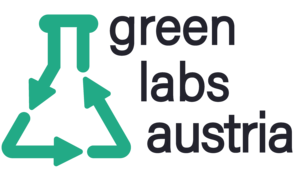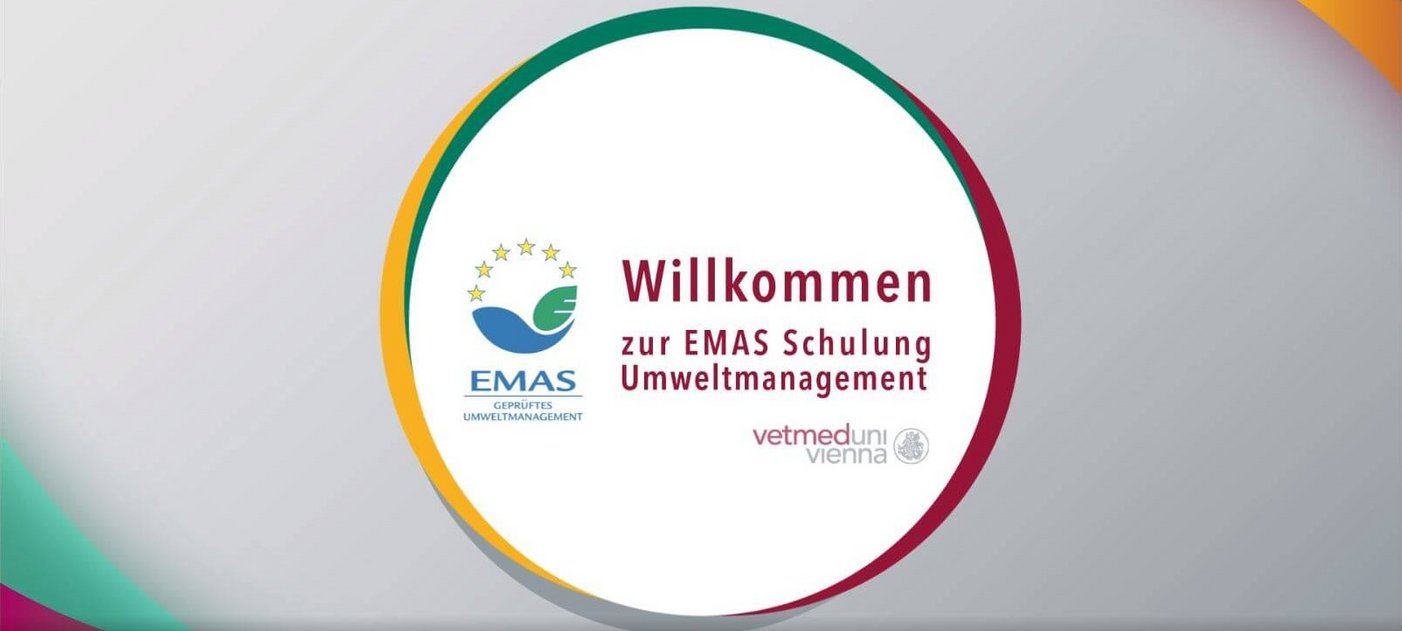- Home /
- University /
- Profile /
- Sustainability /
- EMAS Environmental management
The University of Veterinary Medicine Vienna, with the aim of making a positive contribution to sustainability and to help protect the environment, has set up an EMAS-compliant environmental management system within its Campus Management. The aim of the system is for Vetmeduni and all of its students and staff to work together to protect the environment.
EMAS, which stands for Eco-Management and Audit Scheme, is an environmental management instrument developed by the European Union that supports businesses and organisations of all sizes and from all sectors in continuously improving their environmental performance.
Vetmeduni has been certified to EMAS and ISO 14001:2015 since 2019.
Vetmeduni is also a member of the Alliance of Sustainable Universities in Austria.
All employees of Vetmeduni are encouraged to use the greenhouse gas calculator (University of Graz CarbonTracer) to calculate the emissions of their business travel. The CarbonTracer makes it possible to compare different modes of transport and to easily calculate the greenhouse gas emissions online.
Environmental management measures that have already been implemented:
Vetmeduni is committed to responsible action in the interest of human, animal and environmental health. Mission GreenVet gives everyone the opportunity to contribute to saving energy in the office, in the laboratory and in the lecture hall.
Green spaces of various sizes, with many different types of shrubs for birds, bees and other insects, can be found on the Vetmeduni campus, as well as around 980 trees on a total of 15 hectares of land. The green spaces are very popular with students and visitors alike. In the interest in biodiversity, these areas also require proper management. Vetmeduni employs a full-time gardener who is committed to the upkeep and maintenance of the green spaces. Replacement plantings, the use of automatic irrigation systems and other projects are discussed together with the owner, Bundesimmobiliengesellschaft (BIG).
The Vetmeduni is proud to have over 400 bicycle parking spaces available on campus. Of these, 110 spaces are covered to protect the bikes from the weather. Whether you are an employee or a student, there is enough space for everyone. In this way, Vetmeduni is promoting environmentally friendly mobility and setting a sustainable example.
Seven modern bicycle shelters were built on campus in 2023. These shelters not only offer protection and sufficient space for staff and student bicycles, but are also a real eye-catcher. After evaluating utilisation, further shelters will be planned to meet the needs of sustainable mobility.
Vetmeduni has set up two new e-bike charging stations on the Vienna campus. These stations are specially designed for employees and students who come to campus by electric bike. The charging points are strategically located, covered and have secure access to prevent theft and unauthorised access.
Car park deck: A total of 8 charging points are available on the car park deck.
Horse clinic: There are 4 more covered charging points at the horse clinic.
The Vetmeduni supports environmentally friendly mobility and promotes this through the free use of charging stations for electric bicycles.
A total of six charging points for electric cars are available on campus. These modern charging stations are intended for both employees and visitors. The three charging stations installed by Wien Energie can be controlled intuitively via an app. Each station has space for two vehicles. Vetmeduni is thus setting an example for environmentally friendly mobility and promoting the use of electric vehicles.
The charging points are strategically located next to the main entrance in Josef-Baumanngasse and enable quick and easy charging.
Together with our owner BIG, we installed an automatic irrigation system in 2021 to ensure the adequate irrigation of the green spaces and the trees, especially during the summer months when there is little rain. The irrigation system also helps to supply water to the seedlings and saplings during dry periods.
Saving energy is an important matter for Vetmeduni, and the campus is converting to LED lighting on an ongoing basis.
The library in Building BA and the riding arena in Building PD have already been fully converted to LED lighting.
The library windows have also been coated with a transparent film to achieve a cooling effect by reducing the amount of solar energy that enters a building.
The field stations – for example, the cattle barn at VetFarm – are also transitioning to LED lighting.
The Vetmeduni library has joined Libraries4future, which aims at helping libraries and their staff, students and trainees position themselves as agents of climate protection and resource conservation in library practice and research worldwide.
The library has also come up with an ideal solution for scanning documents and books. In combination with a mobile phone app, it is now possible to hold a book with both hands and scan it using a smartphone without the need to press a button. The app automatically takes a picture of the next page as soon as the page is turned and stops when the same page remains in front of the camera.
Building physics
Durability was given priority in the selection of materials. The energy requirements for the building were reduced by optimising the thermal insulation, which also decreases the reliance on fossil fuels. Environmentally friendly solutions such as the improved thermal insulation, in connection with energetically optimised building technologies using geothermal energy, help to cut operating costs.
The greening of the inner courtyards and of the roof have a positive cooling effect. As the building requires a great deal of energy for cooling, the decision was made to install solar shading structures in the form of mechanically adjustable slats. This reduces the cooling load due to the lower level of solar radiation, which also results in lower energy costs.
HVAC system
The building’s heating and cooling is achieved through the continued use of district heating on the one hand and the newly installed reversible heat pump. The extraction of thermal energy for heating and the return of waste heat for cooling are each carried out via two wells for groundwater extraction and injection. This covers approximately 50% of the heating needs and approximately 65% of the required cooling. To optimise operating costs, the heat pump is operated as a primary energy source.
Electrical engineering
The lights in the corridors and the sanitary rooms are switched on via motion detectors and in some rooms are regulated depending on the amount of daylight. This makes it possible to optimise energy consumption by providing illumination only as needed. Operating costs are also decreased through the use of LED lighting instead of fluorescent lamps, as this reduces the total installed electrical light output per square metre.
The Green Labs Austria initiative aims to make laboratories in Austria more sustainable and environmentally friendly.
Plastic waste that accumulates in the daily laboratory work – for example, tips, tubes and syringes – are collected and regularly picked up to be recycled.
Researchers from several institutes at Vetmeduni support the initiative. At the time of the first pick-up, an incredible 42 kg of plastic waste could be recycled.
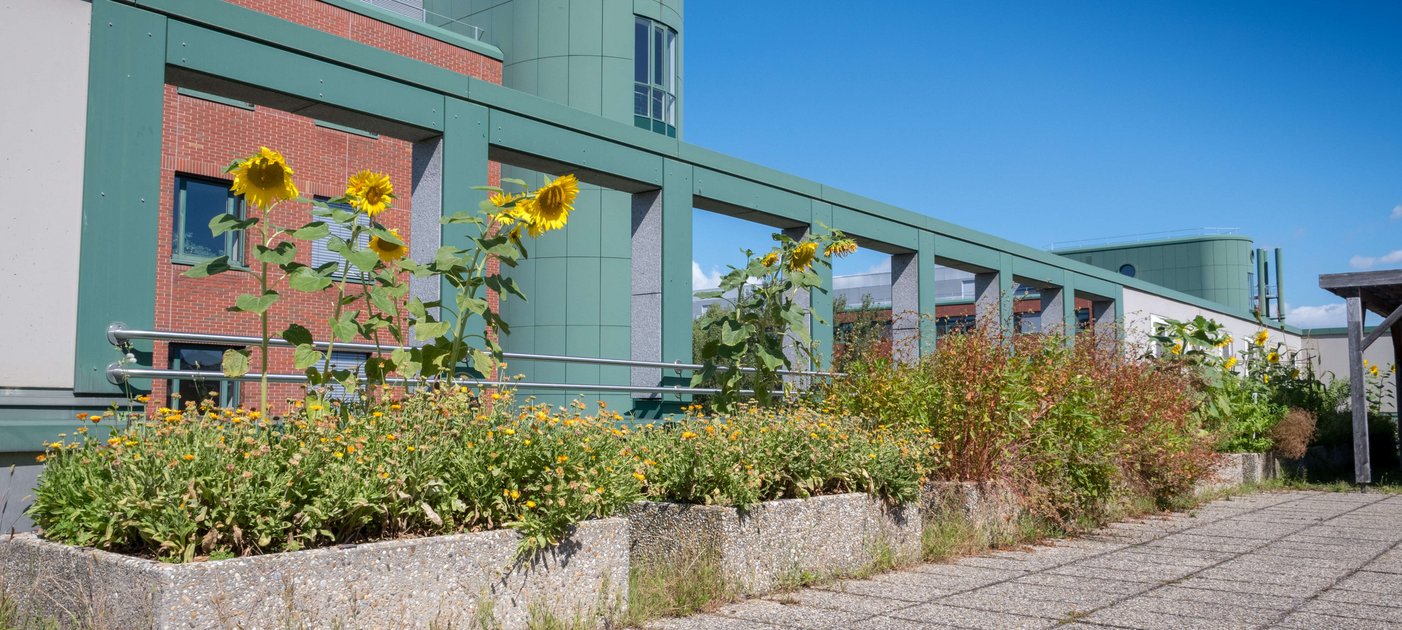
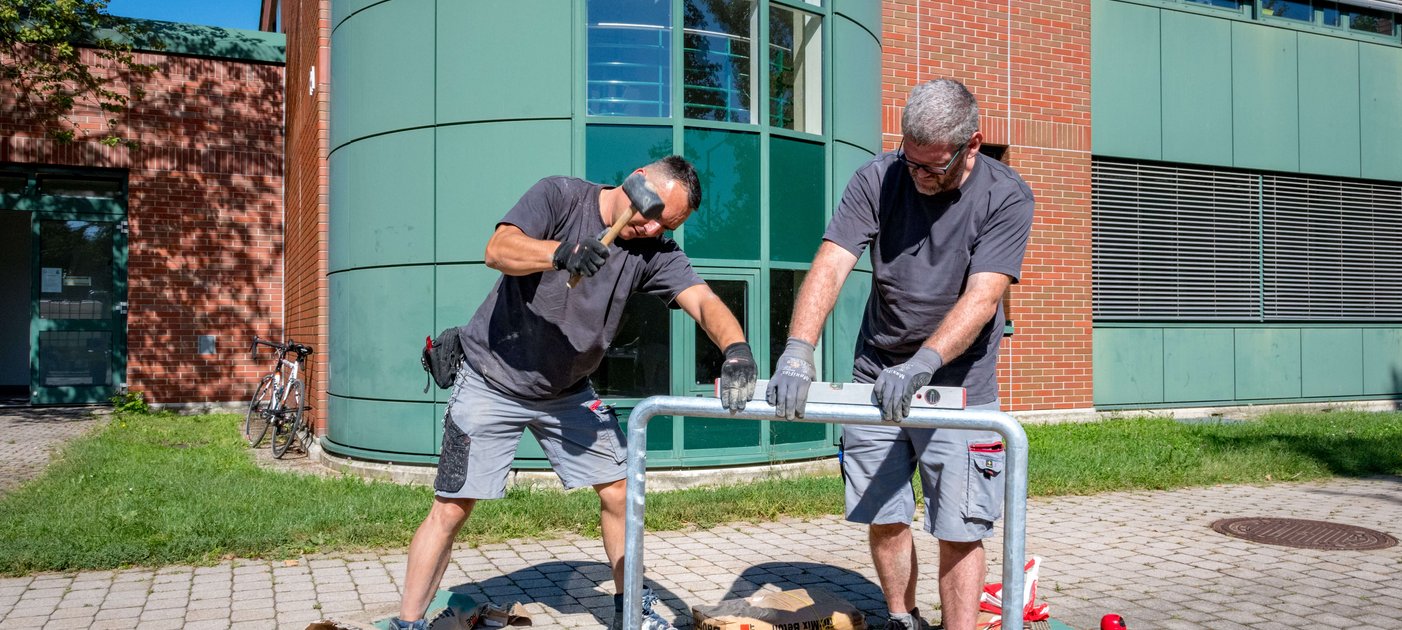

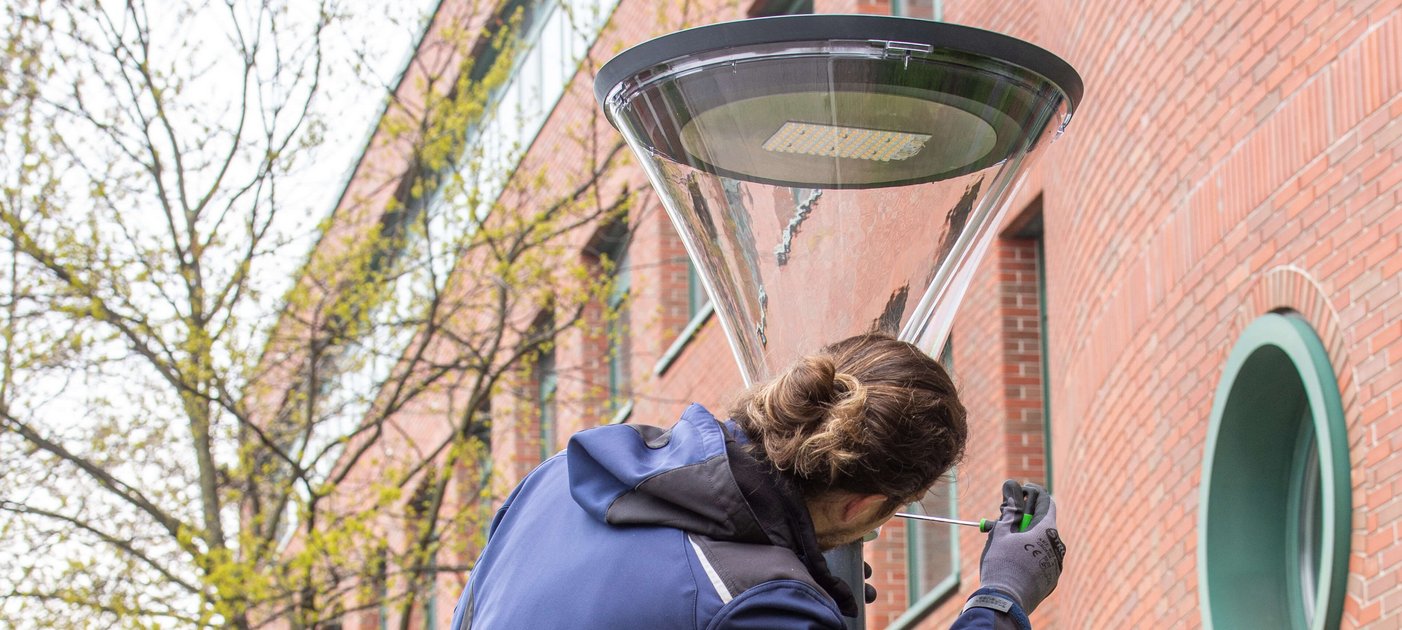
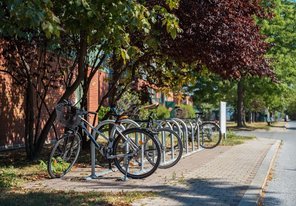







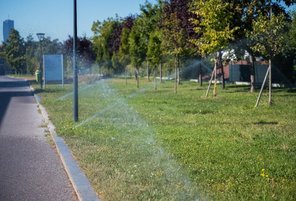
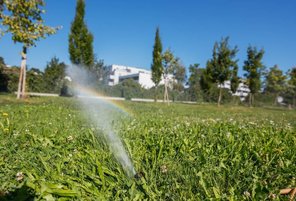
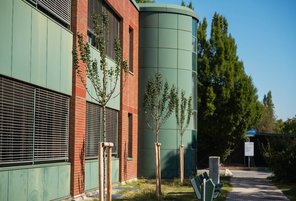
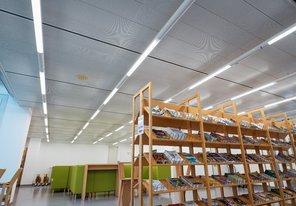
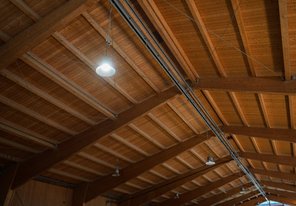
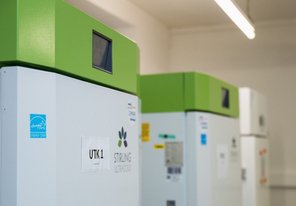
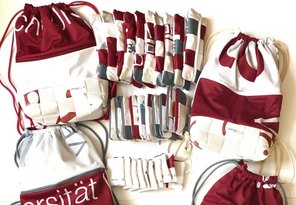
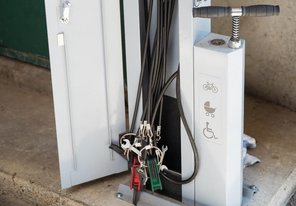
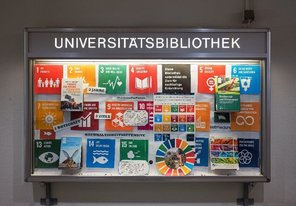
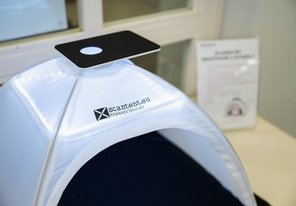
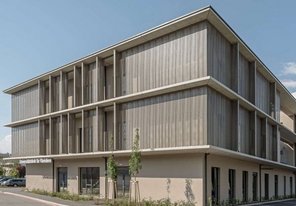
![[Translate to English:] Foto: Stephanie Scholz/Vetmeduni](/fileadmin/_processed_/0/9/csm_Green_Labs_Vetmeduni_e5b0a94dc1.jpg)
